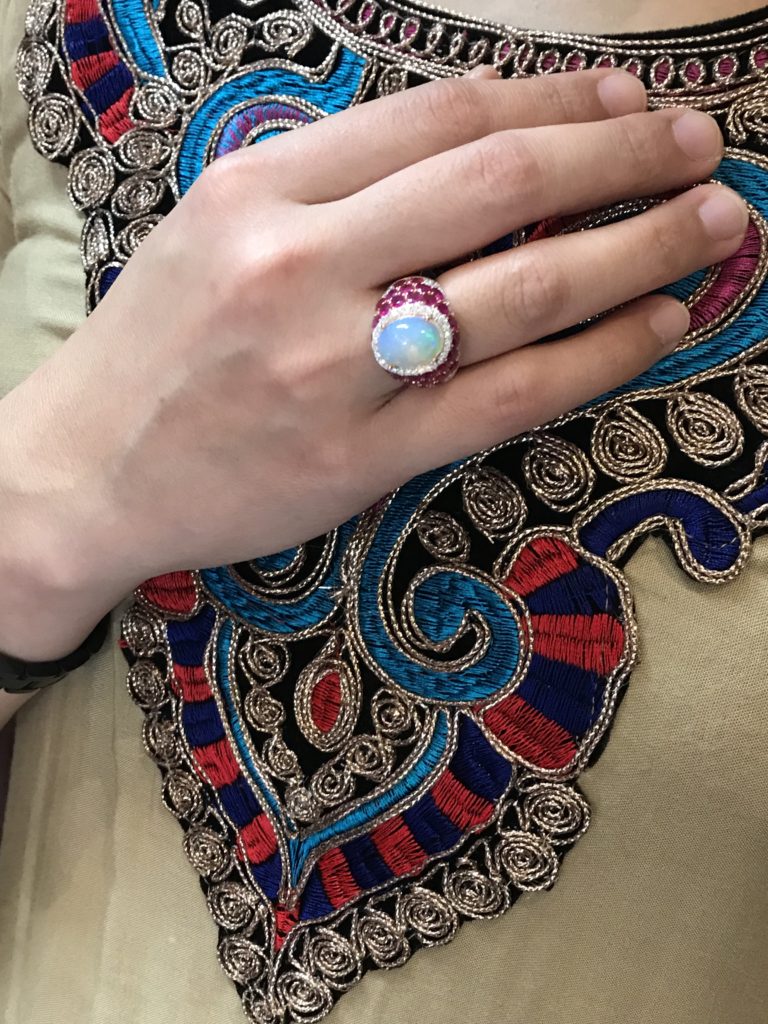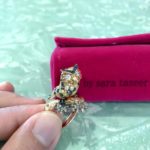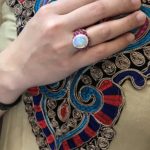My Introduction To The October Birthstone.
I have a houseful of kids and take a keen interest in collecting their birthstones. I know what you’re thinking: Any excuse, right? Maybe so but I do enjoy investigating stories behind gemstones and the construction of their setting. Yes, I’m nerdy that way. Anyway, none of my children are October babies. Consequently, opals hadn’t piqued my interest enough to investigate much. At my first Diwali party this year, thrown by Sara Taseer, almost by accident, this changed.
Sara Taseer’s Diwali lunch at Coriander Leaf was a glittery affair. Having previously bought an intricate owl-shaped ring, as well as a beautiful butterfly brooch from her, I headed straight for the display of sparkling dragons, horses and fishes. Herds of ladies cooed and purred over the same display. Unable to get a good look, I moved away from the menagerie (of jewels, not ladies). I drifted along, taking photos with friends bedecked in colorful Indian attire until I reached a quiet corner. And that’s how I came upon opals.
What Are Solid Opals?
The first pair of milky white Ethiopian opals I saw were earrings with a halo of pink sapphires. I learnt that these were solid opals as opposed to shells with added layers. I looked this up and found that a doublet is a layer of opal bonded to a dark backing to enhance its colors. A triplet has an additional protective dome on top, made of crystal or plastic, to magnify its colors. It’s easy to appreciate how solid opals would not need such bells and whistles to enhance their beauty.
What Is Play-of-Color?
Next, I was shown a couple of rings featuring more white opals. While the larger gem preened in a pretty cocktail ring with Burmese rubies, the smaller but more iridescent one nestled in a classic diamond setting. I couldn’t help but wonder how flashing colors are produced in opals. A quick Wikipedia search revealed some cool facts. Did you know that the internal structure of precious opals diffracts light? This produces flashes of colored light as the gems turn in white light, an effect known as play-of-color. Since regularity, size and packing of silica spheres determine the colors observed, they affect quality. Hence, while the simpler ring had a smaller stone, it was more attractive for its greater spectrum of colors.
What I Learnt over Lunch.
Presently, we moved to the beautiful dining hall for lunch. We socialized over chicken “momo” dumplings and enjoyed fish tikka & Frontier chicken with spicy eggplant. Conveniently, the jewellery that Ginny, Tina & I had admired was brought to our table for consideration. Gilbert & I read assiduously about opals and by the time dessert was served, I had learnt even more. For instance, I discovered that there are many sources, other than Ethiopia, notably Australia. In fact, Lightning Ridge in New South Wales is the main source of the captivating black opals. Coincidentally, Gilbert had written this up in https://curatededition.com/watches-and-jewellery/8-gorgeous-and-rare-gems-you-should-know-about/. After researching through lunch, I found these Australian black beauties as well as Mexican fire opals most intriguing.
Pearls About Opals
In summary, I came to this conclusions during my nerdy lunch-time investigation and reflection:
- Precious opals are beautiful gemstones, displaying a spectrum of colors within a single stone.
- As with good friends, natural solid ones are the real deal.
- As with other gems, the market values rarity and beauty, making black opals particularly sought after.
Nonetheless, there are other considerations besides investment value. For example, sentimental ones in marking milestones and memories. Well, I believe if you’re buying jewellery for personal reasons, then just consider what you enjoy and can afford.
Oh, and I realise I make good decisions when I’m well-fed, well-informed and in good company.


